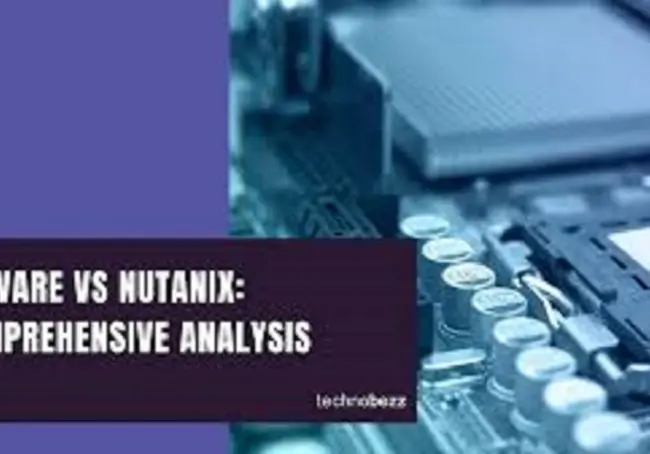
In the ever-evolving landscape of cloud computing and virtualization, two giants that frequently come into competition are VMware and Nutanix. Both companies offer solutions aimed at simplifying data center operations, enhancing cloud infrastructure, and optimizing virtualization for businesses around the globe. This article delves into a comprehensive comparison of VMware and Nutanix, focusing on their offerings, performance, scalability, cost-effectiveness, and customer support, to provide a clear picture of what each brings to the table.
VMware: An Overview
VMware, a global leader in cloud infrastructure and digital workspace technology, accelerates digital transformation by enabling unprecedented freedom and flexibility in how our customers build and evolve IT environments. With VMware solutions, organizations are improving business agility by modernizing data centers and integrating public clouds, driving innovation with modern apps, creating exceptional experiences by empowering the digital workspace, and safeguarding customer trust by transforming security.
Nutanix: An Overview
Nutanix offers a fully integrated, software-defined, hyper-converged infrastructure that merges compute, virtualization, storage, networking, and security to enhance data center simplicity and scalability. By utilizing Nutanix, businesses can streamline their IT operations and lower costs, thanks to the platform's ability to run any application at any scale.
Key Differences and Similarities
Architecture
VMware and Nutanix both provide a robust foundation for virtualizing compute and storage resources but differ significantly in architecture. VMware relies on traditional storage arrays and network fabrics integrated with its ESXi hypervisor to virtualize resources, whereas Nutanix uses a hyper-converged infrastructure (HCI) model that combines these elements into a single, software-defined solution.
Scalability
Both platforms offer scalable solutions, but they approach scalability differently. VMware's vSphere can scale up and out with ease, supporting large, complex deployments. Nutanix, with its HCI approach, allows for linear scalability, meaning resources can be added as needed without the complexity often associated with traditional architectures.
Performance
When it comes to performance, both VMware and Nutanix boast high marks, but the specifics can depend on the workload and configuration. VMware has a long-standing reputation for performance and efficiency, especially in environments that are heavily virtualized. Nutanix, on the other hand, is praised for its performance in HCI deployments, particularly for applications that benefit from its data locality principle.
Cost
Cost comparison between VMware and Nutanix can be tricky, as it largely depends on the specific needs and configurations of a business. VMware may require additional licensing for features that come standard with Nutanix, potentially making Nutanix a more cost-effective option for certain deployments. However, VMware's extensive feature set and flexibility can justify its cost for enterprises requiring its advanced capabilities.
Customer Support and Community
Both VMware and Nutanix are renowned for their customer support and vibrant community ecosystems. VMware's large user base and extensive documentation make it a go-to solution for many IT professionals. Nutanix, while newer to the scene, has rapidly built a strong community and offers comprehensive support and educational resources.
Conclusion
Choosing between VMware and Nutanix comes down to the specific needs and priorities of your organization. VMware offers a more traditional approach with extensive features and scalability, ideal for large, complex environments. Nutanix, with its HCI focus, provides simplicity, cost-effectiveness, and scalability suited for modern data centers looking to streamline operations.
Ultimately, both VMware and Nutanix offer compelling solutions for cloud infrastructure and virtualization. By carefully considering the unique aspects of each platform, organizations can select the solution that best aligns with their IT strategy and operational goals.








